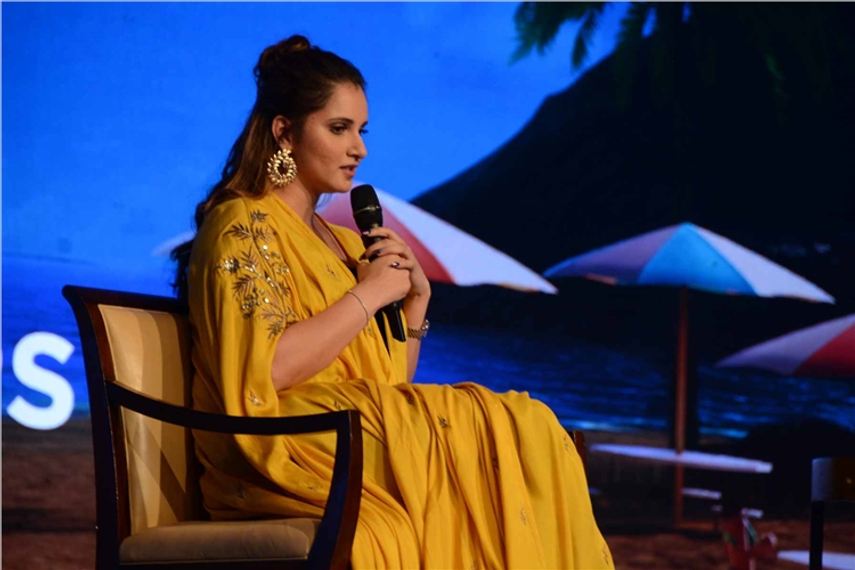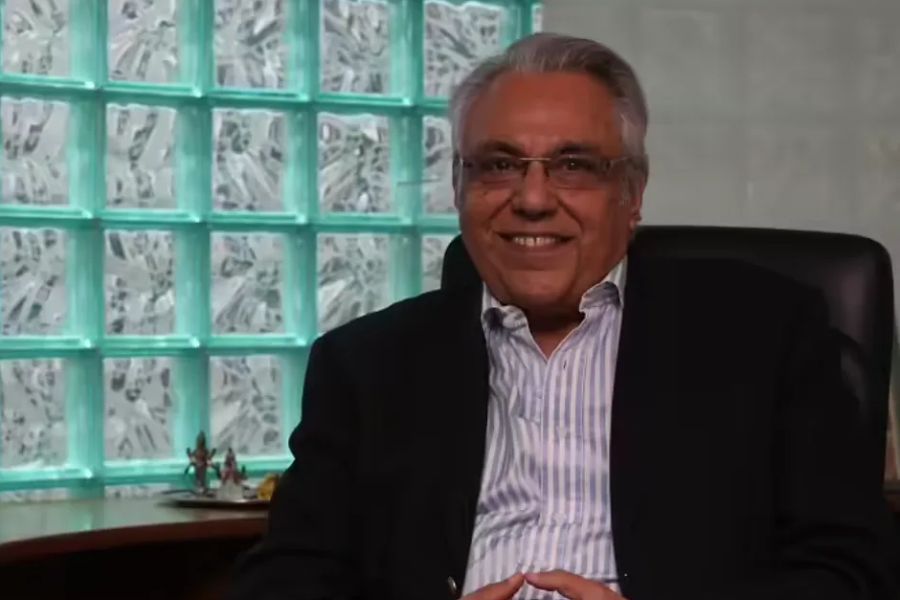Sania Mirza, former world number one in women’s doubles, has announced her retirement and stated that 2022 will be her last year on the tennis courts.
Mirza, who is currently participating in the Australian Open, made her return to competitive tennis last year after taking a break of almost two years for the birth of her son and due to constant injury niggles.
When she returned to the courts last year, one of the things that caught Campaign India’s attention was the lack of an apparel sponsor, as she donned a combination of adidas and Nike.
Brand attention
While her return to the court last year was sponsorless, Mirza has had several deals during her 17-year career which has seen six Grand Slam wins. She’s endorsed brands such as adidas, Bournvita, Centuary Mattresses, Sprite, Tata Tea and TVS Scooty, among others.
A recent study by YouGov also listed Mirza to have inspired 45% of India’s urban youth.
Ramakrishnan R, founder and director, Baseline Ventures, stated that Mirza was the renaissance for brands looking at athletes outside of cricket.
Speaking about her career in the brand space, he said, “Sania as a brand has transitioned very well and has stayed very relevant over the last 17 years which is a testimony to her on-court and off-court discipline. She has not been overexposed by brands but has given the right kind of exposure through platforms beyond straightforward brand endorsements."
While she did get the non-cricket athletes on the brands' radar, Lloyd Mathias, business strategist, angel investor and former marketing head of HP in Apac, believed that Mirza could have got more brand attention, given she was the first Indian woman to win a Grand Slam title and occupied the number one position in women’s doubles for 91 weeks.
“I think a few things contributed to this. One was injuries at a critical juncture forcing an early end to her singles career. Also, her 2010 marriage to Pakistani cricketer Shoaib Malik seemed to have made some brands keep a distance, given the delicate nature of India-Pak ties,” he added.
Sandeep Goyal, MD, Rediffusion, was with dentsu when the agency’s client Tata Tea signed her on as brand ambassador, which was among her first few big endorsement deals.
Explaining why the brand did so, Goyal said, “She then was the epitome of youth, energy, and freshness, and represented a new breed of combative women sports stars who could win at the international level.”
He added that after her performance started dipping and the Indian women badminton players succeeded on the global stage, brands started opting for the latter when they were looking for sportswomen.
Neha Khilnani, founder and CEO, Connekting Dots PR and Brand Communications, firmly believed that brands didn't give her due attention.
"Besides the one-off Bournvita, Volini and Sprite ads during her glory days, she didn’t get the attention sportswomen get today. PV Sindhu, Saina Nehwal, Phogat sisters, Mirabai Chanu, Mary Kom and Mithali Raj, have got more endorsements. It is understandable that male cricket players do get and will get the lion's share, but look at the amount of grit, hard work and fight Sania has had to do and how inspiring her journey has been.”
Babita Baruah, regional client lead for Ford’s international markets group, WPP, claimed that it’s not only Mirza but women in sport in India who haven’t got the required brand attention.
“Barring a few in the global league, we are yet to see women in sports being considered like their male counterparts. Part of it is data suggesting that the fan base is still skewed towards men, whereas the other is self-doubt and lack of confidence amongst stakeholders on whether the brand will be seen as a more feminine skewed brand with female endorsers,” she added.
Baruah also stated that the future is better because of a combination of Gen Z being more gender agnostic, coupled with the rise of influencers.
“The extended digital influencer world is showing a very different story with female influencers including women in sports showing a healthy follower and engagement rate. The difference is when it comes to big-budget brand endorsements and questions on ROI. We see a positive future for the younger upcoming women in sports as Gen Z and future consumers are way more gender agnostic according to studies,” she added.
Agreeing with Baruah, Khilnani added, “Mirza can truly realise her full potential if brands utilise her charisma and uniqueness. We have an icon that represents the best of both worlds. She’s a mother, she’s a sportswoman and she has made India and Pakistan proud. There was a time when even her nose-pin had become a fashion trend among college students. She has 8.7 million followers on Instagram and she posts real and relatable content. She can be a great influencer in the subcontinent for a variety of brands. Take baby care, sports gear, pain relief, women’s products…there is so much that can be done.”
S Subramanyeswar, chief strategy officer – Asia Pacific and head of global planning council, MullenLowe Group, recounted Mirza’s first game on the global stage.
“I still vividly remember her first Grand Slam match against Serena Williams. Though she lost the match in straight sets as expected, her forehand sent Serena into a baseline retriever,” he said.
From a brand perspective, Subramanyeswar believed that consistency cost her. “She had the glamour too, making her an ideal candidate for endorsements. But endorsement deals have no emotions. Once you become famous, you got to stay famous. She did play many tournaments but rarely had she progressed into the knock-out stages that draw big attention, barring in doubles towards the latter part of her career. And, consistency and longevity do weigh a lot for brands to stay invested in a celebrity as a brand that can further business rather than just offering salience.”
Future
After the end of the Australian Open, there are three more Grand Slams scheduled in the year which Mirza could potentially participate in and bring herself and the country glory. Beyond that, can she stay relevant among brands?
Mathias believed that her persona as an outspoken sportsperson should keep her top-of-mind among marketers.
“As a woman achiever, from a minority, she represents a strong voice for a young and modern India, who many will look up to as a role model. She has broken stereotypes and her personality could be a great fit for brands to make a strong statement. Of course, how she chooses to use her fame and what she will do in the years' post her retirement will play a role in how brands will see her.”
Khilnani added that Mirza has all the required credentials for brands even in the future. “She can be a great spokeswoman for all things that appeal to the Indian diaspora abroad. She can empower women's movements. There are so many different aspects of her life that can bring so much value and goodwill to any brand.”
Baruah viewed Mirza’s future in the ad space as one that’s based on many factors, which include most importantly the TG of the brand.
“Sania's journey is an inspiring story. It’s one of resilience, sweat, challenges, and success. Brands that have relevance to this journey should find this worthy of consideration. The debate again is not Sania, but who is the bulls-eye audience? Do we talk to a forty plus audience as focus at all in mainstream media? Or is it still effective to talk about mindset and portray an endorser that has appeal across age groups,” she said.
Ramakrishnan suggested that she should look to causes that are close to her heart and stay visible on social media and traditional media.
“She has matured in her brand cycle and like any retired sports athlete, she or he should be relevant beyond active sports to get brand deals. Appearing on talk shows, being busy on social media and appearing on traditional media, should help,” he said.
Mathias echoed Ramakrishnan’s views on her visibility.
“If Mirza has to remain in the endorsement circuit, then visibility will be key. I don’t know if that will happen without her playing or being mentioned in newspaper headlines. She is a player with spunk; generally friendly and affable. She could be a good endorser in the future too, with her winning credentials, but needs to have handlers who understand how to pitch her brand right.
However, Subramanyeswar has doubts about her future in the brand space. He said, “Honestly, I don’t see a future for her in endorsement space post-retirement. Her equity hasn’t extended beyond the sport that she played, like a Sachin or Dhoni, for brands to build connections between her and the audience.”
Whether or not she has a future in the brand space, only time will tell, but we agree with Baruah on her claim of Mirza having the power to influence.
“Sania has her strength. Appeal. Power to influence. Regardless, whether brands endorse her or not, we cannot take this away from her or any other sportswomen in her league,” she said.




